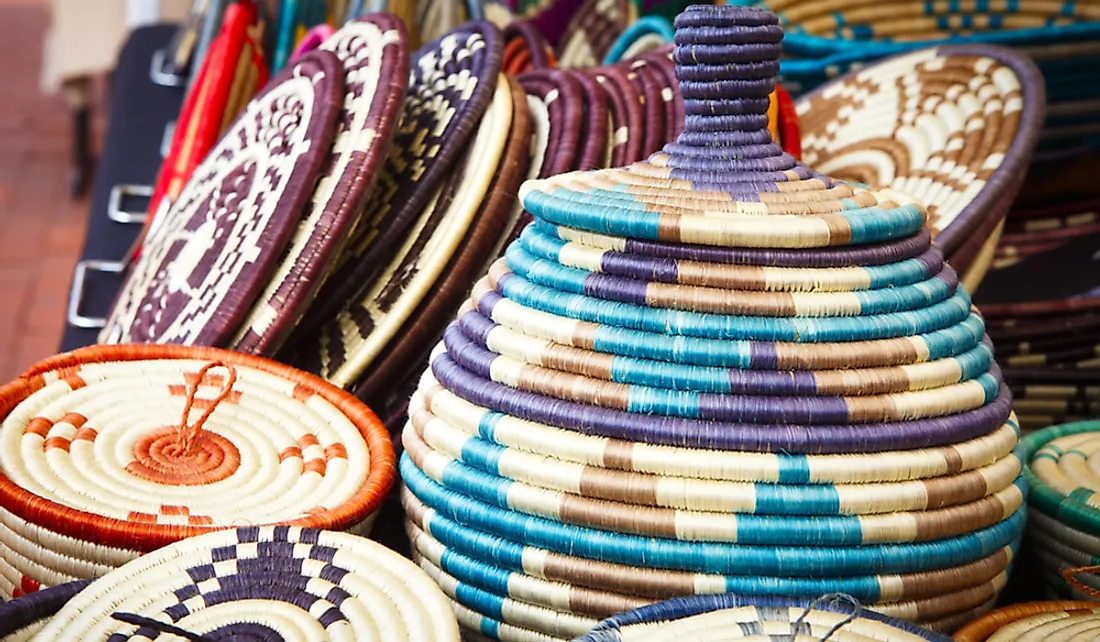The Culture Of Uganda

The East-Central African landlocked country of Uganda hosts a population of around 40,853,749 individuals. Like most of its neighbors, Uganda is home to diverse ethnic communities whose distinct cultures together shape the national culture of Uganda.
7. Ethnic Groups, Languages, and Religions in Uganda
The country is home to about 65 different ethnic groups and tribes. The largest such group is the Baganda who account for 16.5% of the total population. Other Ugandan ethnic groups with a significant presence in the country include the Banyankole, Basoga, Bakiga, Iteso, Langi, and others.
English is the country’s official language. A large number of Niger-Congo languages are also spoken with the most prominent one being the Ganda or Luganda.
Most Ugandans are Christians. Protestant Christians and Roman Catholics account for 45.1% and 39.3% of the population, respectively. Muslims are the second biggest religious group represented by 13.7% of the population.
6. Cuisine of Uganda
Ugandan dishes reflect the influences of many different cuisines like English, Arab, and Indian. A variety of vegetables and tropical fruits like yams, cassava, bananas, potatoes, etc., are an integral part of the Ugandan cuisine. Fish, chicken, pork, goat, mutton, and beef are all commonly eaten. Bushmeat is consumed in the remote, forested parts of the country.
The basic meal consists of a carbohydrate-based and a protein-based dish. In the South, a maize meal called posho or matooke (steamed and mashed green banana) are the basic carbohydrate meals. In the North, a millet-based ugali-like dish is eaten. Chapati, a type of flatbread, is also popular. Meat or vegetable stews are usually served with the basic carbohydrate dish. Groundnuts are also a staple food. Groundnut sauce is consumed with smoked mushrooms, meat or fish. A paste of roasted sesame is often an important ingredient of the Ugandan cuisine. It is added to a stew of greens and bean and eaten. Luwombo is a traditional Ugandan dish prepared by steam-cooking meat, fish, or chicken in banana leaves. A bamboo shoot dish called Malewa is popular in eastern Uganda.
Both tea and coffee are widely consumed. Beers are the most widely available alcoholic beverages. Fermented banana wine is also prepared in the country.
5. Clothing in Uganda
The kanzu, a white or cream-colored robe, serves as the national dress of Ugandan men. Women in eastern and central Uganda adorn the gomesi which is a dress with exaggerated, large shoulders and a sash tied around the waist. The suuka is worn by the women in the northwest and west. It is a long cloth that is draped around the waist as well as the shoulders. The busut, a floor-length dress is also worn by the Ugandan women.
4. Literature, Art, and Craft in Uganda
Like most other African countries, Uganda has a rich heritage of oral literature but written literature in the country is relatively recent. The oral literature includes folktales and legends, war stories, poems, ritualistic chants, historical accounts, etc., that are passed down through generations by word of mouth.
Ugandan craftsmen produce a variety of handicrafts that have both functional and decorative values. Multi-headed spears are produced for use in religious practices. Vessels made of wood and gourd are used for storing food and drinks. Woven baskets, pottery, tribal jewelry, bows and arrows, swords, hunting knives, headdresses, etc., some of the well-known handicraft items of Uganda.
3. Performance Arts in Uganda
Uganda has a rich heritage of folk music and dance by virtue of its ethnic diversity. The music of the Baganda people dominates the musical scene of the country. The Kadongo Kamu style of music that originated from the Ganda music is the first popular music form born in the country. The western music styles like rock and hip-hop are popular among the youth in urban areas.
2. Sports in Uganda
Football (soccer) is Uganda’s national sport. It is played both professionally and informally throughout the nation. Cricket is also a popular game. Other sports played in Uganda include the basketball, rugby, boxing, athletics, etc. The country’s athletes have participated in several major international sports events over the years and won many medals, including Olympic medals.
1. Life in the Ugandan Society
The traditional Ugandan society is patriarchal in nature. Men generally hold a higher status than women. Although women in rural areas constitute a significant percentage of the agricultural workforce, women are underrepresented in other spheres of employment. Most of the higher ranks in politics, administration, civil services, etc., are occupied by men. Gender-based roles are assigned to both men and women. Women are responsible for managing the household chores and children. Men usually have the highest authority in the family and the final say on most family matters.
Polygamous marriages are common in Uganda. Men usually pay brideprice to the bride’s family in exchange for their daughter. In the polygamous households, the first wife often enjoys the highest authority after her husband. Although the written modern law allows women to inherit property, the customary laws usually prevail in most areas where women are often deprived of their inheritance rights.
Family planning is low and thus most families have a large number of children. Child mortality is high in Uganda. Literacy levels are also low in Uganda. Quality education is hardly available in rural areas. Children drop out of school at an early age to assist their parents in their work. Girls household chores and tend to their smaller siblings while boys receive training in various life and work skills from their fathers.











